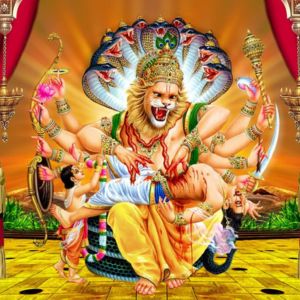Swati Nakshatra

The Nakshatra which spreads from 6 degrees 40 minutes to 20 degrees of Tula Rashi is called Swati (स्वाती). This is the 15th Nakshatra in Vedic Astronomy. In Modern Astronomy, Swati corresponds to Arcturus.
Characteristics
Traits of those born in Swati Nakshatra are:
- Smart
- Comfortable in life
- Charitable
- Righteous
- Kind
- Ambitious
- Intelligent
- Good communication skills
- Interest in arts and music
- Inclination towards drinking, smoking, etc.
- Short-tempered
- Independent thinking
- Humane
- Humble
- Intuitive
- Sweet behavior
- Business skills
- Systematic
Mantra
ॐ वायवे नमः
om vayave namah'
Click below to listen to Swati Nakshatra Mantra
Unfavorable Nakshatras
- Anuradha
- Mula
- Uttarashada
- Krittika Vrishabha Rashi
- Rohini
- Mrigashira Vrishabha Rashi
Those born in Swati Nakshatra should avoid important events on these days and also avoid partnership with those belonging to these Nakshatras.
Health issues
Those born in Swati Nakshatra are prone to these health issues:
- Urinary diseases
- Skin diseases
- Leucoderma
- Leprosy
- Diabetes
- Kidney problems
Suitable career
Some of the suitable careers for those born in Swati Nakshatra are:
- Electrical equipment
- Vehicles
- Transport
- Travel & Tourism
- Cinema
- T.V.
- Music
- Arts
- Exhibitions
- Decoration
- Scientist
- Judge
- Poet
- Anchor
- Bakery
- Dairy
- Leather Industry
- Cooking
- Attendant
- Photography
- Videography
- Garments
- Perfumes
- Plastics
- Glass
Can Swati Nakshatra wear diamond?
Favorable.
Lucky stone
Gomed (Hessonite).
Favorable colors
Black, white, light blue
Names for Swati Nakshatra
The starting letter of the name as per Avakahadadi system for Swati Nakshatra is:
- First charana - रू (Ru)
- Second charana - रे (Re)
- Third charana - रो (Ro)
- Fourth charana - ता (Ta)
These letters can be used for the traditional Nakshatra name kept at the time of the naming ceremony.
In some communities, the names of the grandparents are kept during the naming ceremony. There is no harm in following that system.
Shastra prescribes that the official name kept for records and all practical purposes should be different from this. It is called Vyavaharika nama. The Nakshatra name as per the above system should be known only to close family members.
Letters that you should avoid in the official name for those born in Swati Nakshatra are - य, र, ल, व, उ, ऊ, ऋ, ष, अं, अः, क्ष (ya, ra, la, va, u, oo, ri', sha, am, ah', ksha)
Marriage
Women born in Swati Nakshatra will have comfortable and successful marital life. They are noble, well-mannered, and faithful to their spouse. Men should stay away from vices such as drinking.
Remedies
Periods of Surya, Shani, and Ketu are generally unfavorable for those born in Swati Nakshatra. They may perform the following remedies.
- Perform Rahu Shanti Homa
- Perform Shukra Shanti Homa
- Perform Mahalakshmi Homa
- Listen to this Naga Mantra every day
- Listen to this Rahu Mantra every day
- Listen to this Lakshmi Meditation every day
Swati Nakshatra
- Lord - Vayu
- Ruling planet - Rahu
- Animal - Buffaloe
- Tree - Arjun tree (Terminalia arjuna)
- Bird - Crow
- Bhuta - Agni
- Gana - Deva
- Yoni - Buffaloe (Male)
- Nadi - Antya
- Symbol - Coral
Comments
Recommended for you
Guruvayur Temple

The Lord called Uddhava and said: find a suitable place and install this idol; even after I return to Vaikuntha, my complete presence will be there in....
Click here to know more..Do you know who gives light to Sun?
 Click here to know more..
Click here to know more..
Narahari Ashtakam

यद्धितं तव भक्तानामस्माकं नृहरे हरे। तदाशु कार्यं कार्�....
Click here to know more..
English Topics
Astrology
Click on any topic to open
- 93 Is it a Good Day for You Today and Tomorrow?
- 92 What Is Kari Naal?
- 91 Revati Nakshatra Famous Personalities
- 90 Uttara Bhadrapada Nakshatra Famous Personalities
- 79 Purvabhadra Nakshatra Famous Personalities
- 78 Satabhisha Nakshatra Famous Personalities
- 77 Dhanishta Nakshatra Famous Personalities
- 76 Shravana Nakshatra Famous Personalities
- 75 Uttarashada Nakshatra Famous Personalities
- 74 Purvashada Nakshatra Famous Personalities
Please wait while the audio list loads..
30
Ganapathy
Shiva
Hanuman
Devi
Vishnu Sahasranama
Mahabharatam
Practical Wisdom
Yoga Vasishta
Vedas
Rituals
Rare Topics
Devi Mahatmyam
Glory of Venkatesha
Shani Mahatmya
Story of Sri Yantra
Rudram Explained
Atharva Sheersha
Sri Suktam
Kathopanishad
Ramayana
Mystique
Mantra Shastra
Bharat Matha
Bhagavatam
Astrology
Temples
Spiritual books
Purana Stories
Festivals
Sages and Saints

